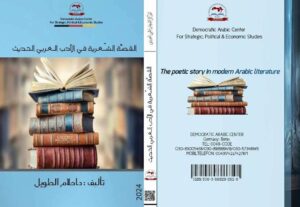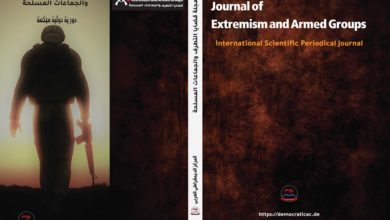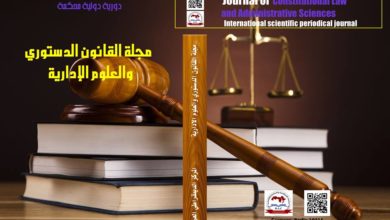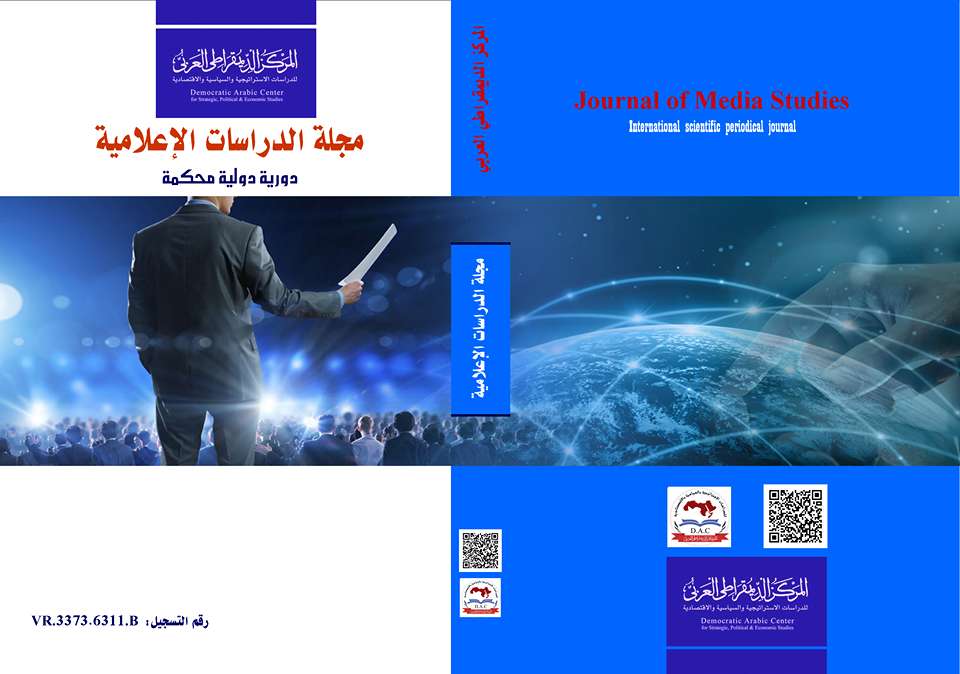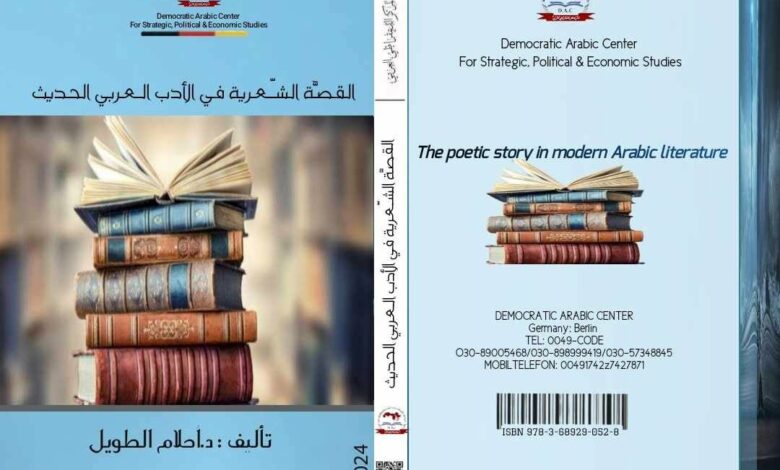
تأليف : د. أحلام الطويل
نسخة “pdf”-
القصّة الشّعريّة في الأدب العربي الحديث
الطبعة الأولى “2024″ –من كتاب: :- القصّة الشّعريّة في الأدب العربي الحديث
جميع حقوق الطبع محفوظة #المركز_الديمقراطي_العربي ولا يسمح بإعادة إصدار هذا الكتاب أو اي جزء منه أو تخزينه في نطاق إستعادة المعلومات أو نقله بأي شكل من الأشكال، دون إذن مسبق خطي من الناشر .
تقديم :-
يتمثّل عملنا هذا في افتراض وجود جنس سرديّ هجين في الأدب العربيّ يجمع بين نثريّة السّرد ومقوّمات القصّ من ناحية وأساليب الشّعر وأدواته من ناحية أخرى: ألا وهو جنس القصّة الشّعريّة. ولقد انطلقنا في فرضيّتنا هذه من المقوّمات التي حدّدها له “جان إيف تادييه” ومن البراهين التي أبداها على وجوده في الأدب الغربي وذلك في كتابه le récit poétique، الذي بيّن فيه أنّ القصّة الشّعريّة هي حلقة وصل بين الرّواية والقصيدة، فهي وإن احتوت على جميع مقوّمات القصّ من أحداث وشخصيّات وأزمنة وأمكنة فإنّها تتّسم بالتّفكّك والغموض والكثافة والرّمزيّة، وتغلب عليها الوظيفة الإنشائيّة على خلاف سائر الأجناس القصصيّة التي تهدف إلى محاكاة الواقع وتهيمن عليها الوظيفة المرجعيّة.
وقد نشأت هذه الفرضيّة من انطباع تحصّل لدينا من مطالعة العديد من الأعمال السّرديّة التي دأب الخطاب النّقديّ المعاصر على إنمائها إلى الرّواية. فوجدنا بالتّمعّن في خصائصها الفنّيّة أنّها لا يمكن أن تُحسب على الجنس الرّوائيّ. ذلك أنّها شكل وسط بين القصّة والشّعر، وبدا لنا أنّ مفهوم القصّة الشّعريّة كما بلوره “جان إيف تادييه” هو الأنسب لتحديد طبيعتها الأجناسيّة. فقمنا باختبار سلامة هذه الفرضيّة والتّحقّق من وجود هذا الجنس السّرديّ الهجين في أدبنا العربيّ الحديث، ووقفنا على مدى انطباق مقوّماته على أعمال أدبيّة بعينها. فأخضعنا للدّرس إحدى عشرة قصّة.
ورأينا أنّ بحثا جامعيّا موسّعا يعتني بهذا الجنس الأدبي ويبيّن حدوده ويستكنه أبعاده ويحيط بمقوّماته في المدوّنة السّرديّة العربيّة الحديثة ضروريّ لسدّ ثغرة في المدوّنة النّقديّة العربيّة، وضروريّ إسعافنا بتصنيف العديد من الأعمال من المدوّنة القصصيّة العربيّة، التي دأب النّقد الحديث على إنمائها إلى جنس الرّواية، وضروريّ أيضا لرفع اللّبس عن مصطلح “القصّة الشّعريّة” في الخطاب الأدبي العربي الحديث، إذ درج بعض النّقّاد على استخدام هذا المصطلح مرادفا لمصطلحيْ “الشّعر القصصي” أو “القصيدة القصصيّة”.
ولقد أفردنا بابا أوّل تناولنا فيها مجموع المفاهيم التي تخصّ بحثنا، فكانت بمثابة الإطار النّظريّ لدراسة “القصّة الشّعريّة”، وكانت مدخلا تعقّبنا من خلاله مفهوم الأجناس الأدبيّة وقضاياها بدءا بنشأة النّظريّة الأجناسيّة، ومظاهر البلاغة الأجناسيّة، ومسألة النّقاء الأجناسيّ، وصولا إلى إشكاليّات التّصنيف الأجناسيّ في ظلّ التّضايف بين السّرد والشّعر، وأوجه التّداخل بينهما ضمن العمليّة الإبداعيّة. ثمّ أحطنا بمفهوم الجنس القصصيّ عموما والجنس الرّوائيّ بالخصوص فبحثنا في نشأة الرّواية ومقوّماتها واتّجاهاتها. وانتهينا في هذا القسم النّظريّ إلى الإلمام بمفهوم القصّة الشّعريّة ومقوّماتها.
وباشرنا في الباب الثّاني من هذا البحث دراسة ما أدرجناه في مدوّنتنا من أعمال وافترضنا فيها استجابة لمقوّمات جنس “القصّة الشّعريّة”، لما لمسناه فيها من جنوح بيّن إلى لغة الشّعر والكثافة والغموض والتّرميز والإشجاء والتّوقيع.
وانصبّ اهتمامنا في الباب الثّالث على جملة من القضايا تعلّقت أولاها بملابسات نشأة هذا الجنس في الأدب الغربي، في علاقة بأزمة الكتابة الرّوائيّة وبالأزمات الفكريّة والمعرفيّة والثّقافيّة التي تطلّبت استخدام آليّات فنّيّة مغايرة. ونظرنا كذلك في ملابسات نشأتها في الأدب العربي، وبيّنّا أنّ القصّة الشّعريّة العربيّة لم تكن إفرازا طبيعيّا لتطوّر الرّواية العربيّة، وإنّما كانت نتاجا لنزوع طارئ إلى التّجريب الرّوائيّ الذي اقترن بسياق تأصيليّ بحث عن وسائل لكتابة رواية بأدوات إنتاج عربيّة، واقترن بسياق حساسيّة جديدة تبحث هي الأخرى عن إمكانيّة إنتاج نصّ عربيّ حديث لا يتماهى مع النّصوص الرّوائيّة الغربيّة، واقترن أخيرا بنزوع أسلوبيّ نحو تشعير السّرد. ولقد ثبت لدينا أنّ المحتوى السّرديّ للعمل وما يحمله من أبعاد فكريّة ورؤيويّة وأنساق أسطوريّة، هو الذي يفضي به إلى شكل القصّة الشّعريّة.
ونظرنا كذلك في مسألة التّفاوت في تحقيق مفهوم القصّة الشّعريّة بصفة تامّة أو جزئيّة ومحاذير الوقوع في مشاكل التّفكّك العضويّ والتّنافر بين الشّكل والمحتوى والتّسيّب الأسلوبي الذي قد يصيب بعض الأعمال ويفضي بها إلى اللاّشكل.
وانتهينا إلى الوقوف عند قضايا التّجنيس والدّلالة في القصّة الشّعريّة فنتناول فيه مسألة الهويّة الأجناسيّة انطلاقا من إشكاليّة التّجنيس في العتبة، وطرحنا إشكاليّات مقروئيّة القصّة الشّعريّة في علاقة بالعقد القرائيّ وبالغموض وتعمية المعنى.
Abstract
Our work consists in assuming the existence of a hybrid narrative genre in Arabic literature that combines narration and poetry: that is, the genre of the poetic story. We started our hypothesis from the elements identified by Jean-Yves Tadié and from the proofs he showed of the presence of poetic story in occidental literature in his book Le Récit Poétique, in which he demonstrated that the poetic story is a link between the novel and the poem. Even though it contains all the Narrative elements, including events, characters, times, and places, these elements are characterized by disintegration, ambiguity, density, and symbolism, and are dominated by the structural function, unlike other genres of stories that aim to simulate reality and are dominated by the referential function.
This hypothesis arose from an impression we obtained from reading many narrative works that contemporary critical discourse has tended to develop into novels. By examining its artistic characteristics, we found that it cannot be considered a genre of fiction. This is because it is an intermediate form between story and poetry, and it seemed to us that the concept of the poetic story, as formulated by Jean-Yves Tadié, is the most appropriate to define its genre nature. So we tested the soundness of this hypothesis and verified the existence of this hybrid narrative genre in our modern Arabic literature, and examined the extent to which its components apply to specific literary works. We studied eleven stories.
We saw that extensive university research that pays attention to this literary genre, clarifies its boundaries, encompasses its dimensions, and encompasses its components in the modern Arab narrative corpus is necessary to fill a gap in the Arab critical corpus, and it is necessary to assist us in classifying many works from the Arab narrative corpus, which modern criticism has been developing into the genre of the novel. Also, to remove confusion about the term “poetic story” in modern Arabic literary discourse, as some critics used this term synonymously with the terms “narrative poetry” or “narrative poem.”
We devoted a first chapter in which we discussed the totality of the concepts that pertain to our research. It served as a theoretical framework for studying the “poetic story,” and it was an introduction through which we traced the concept of literary genres and their issues, starting with the emergence of genre theory, the manifestations of genre rhetoric, and the issue of genre purity, all the way to the problems of genre classification in The compatibility between narrative and poetry, and the aspects of overlap between them, remained within the creative process. Then we took into account the concept of the narrative genre in general and the fictional genre in particular, and we investigated the origins of the novel, its components and trends. In this theoretical section, we ended up familiarizing ourselves with the concept of the poetic story and its components.
In the second chapter of this research, we began studying the works that we included in our blog and assumed that they responded to the components of the “poetic story” genre, due to what we observed in it of a clear tendency toward the language of poetry, density, ambiguity, symbolization, allegory, and rhythm.
In the third chapter, our attention focused on a number of issues, the first of which was related to the circumstances of the emergence of this genre in occidental literature, in relation to the crisis of novel writing and to the intellectual, cognitive and cultural crises that required the use of different artistic mechanisms. We also looked at the circumstances of its emergence in Arabic literature, and showed that the Arabic poetic story was not a natural outcome of the development of the Arabic novel, but rather was the product of an urgent tendency toward novelistic experimentation that was coupled with an original context that searched for means of writing a novel using Arab production tools, and was coupled with a context of a new sensitivity that was also searching for About the possibility of producing a modern Arabic text that is not compatible with occidental fictional texts, and was finally coupled with a stylistic tendency toward poeticizing the narrative.
We have proven that the narrative content of the work, and the intellectual and visionary dimensions and mythological patterns it carries, is what leads it to the form of a poetic story.
We also considered the issue of disparity in realizing the concept of the poetic story, whether completely or partially, and the warnings of falling into problems of organic disintegration, dissonance between form and content, and stylistic looseness that may affect some works and lead them to formlessness.
We ended up examining the issues of naturalization and significance in the poetic story, in which we addressed the issue of gender identity based on the problem of naturalization in the threshold, and we raised the problems of the readability of the poetic story in relation to the reading contract, ambiguity, and blinding of meaning.
الناشر: المركـز الديمقراطي العربي للدراسات الاستراتيجية والسياسية والاقتصادية – ألمانيا – برلين
Democratic Arabic Center- Berlin – Germany

